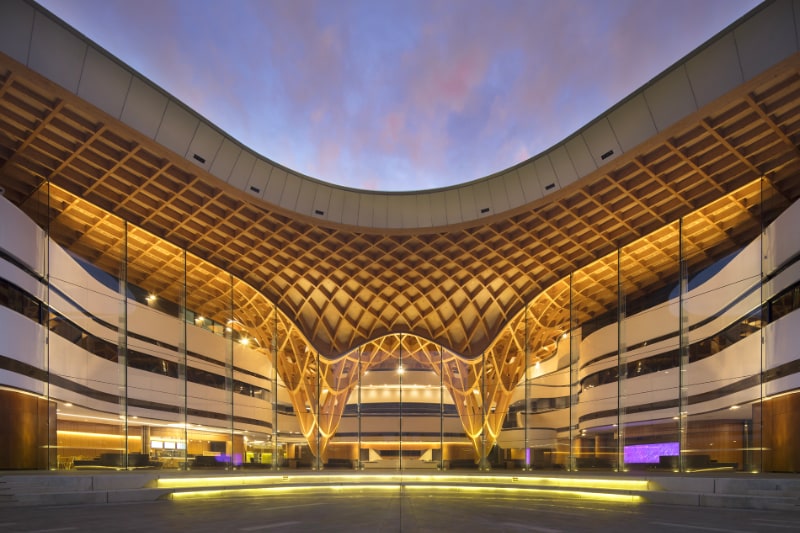Planet Ark – Make it Wood
 Planet Ark Environmental Foundation’s Make It Wood campaign aims to increase the use of responsibly sourced wood as a building material. That’s because responsibly sourced wood is the only major building material that helps tackle climate change. It’s renewable – the ultimate renewable – it stores carbon and has much less embodied energy than other, more carbon-intensive building materials.
Planet Ark Environmental Foundation’s Make It Wood campaign aims to increase the use of responsibly sourced wood as a building material. That’s because responsibly sourced wood is the only major building material that helps tackle climate change. It’s renewable – the ultimate renewable – it stores carbon and has much less embodied energy than other, more carbon-intensive building materials.
We also know that wood is good for our health and wellbeing and can help to reduce blood pressure and heart rate. It’s becoming increasingly clear that using wood and biophilic design brings the benefits of nature into our homes, offices and other built environments. New research on urban planning shows that workers are more productive, students learn better, patients heal faster and we’re all happier when we’re surrounded by natural elements like plants and timber.
Environmental benefits of timber
The IPCC recently issued its latest report with a stark warning about how long we have left to moderate CO2 emissions and to halt global warming. It is no longer enough to reduce emissions, we need to start actively reducing the CO2 already in the atmosphere. The planting of more trees is the only realistic method we have of reducing atmospheric carbon but, in Australia and around the world, moves to encourage more forests and plantations are failing to generate anywhere near the levels required. Furthermore, science tells us that trees are only really effective at carbon absorption during the growth stages. Once they mature, the wood needs to be harvested and new trees planted, supported by the active use of certification schemes like FSC and/or Responsible Wood (PEFC). In the built environment wood provides thee significant environmental benefits.
Firstly, wood is the only large-scale renewable building material currently available. Until recently, the tallest timber building in the world was a university residence building in Vancouver, Canada. It is 18 storeys or 53 metres tall, and incorporates 2,233 cubic metres of engineered timber in its structure. Calculations have shown that the volume of timber used would have been regrown in US and Canadian forests in a mere six minutes.
Secondly, when wooden products are used in the construction of buildings, they provide long-term carbon storage – about half of the dry weight of wood is carbon, which is stored for as long as the building exists. The oldest timber building in the world is the Horyuji Temple in Japan, which has been storing timber since 710, over thirteen hundred years! And thirdly, using wood significantly reduces the CO2 emissions that are produced when using conventional materials, which have significantly higher levels of embodied energy. As a rule of thumb if we replace a cubic metre of a solid material like concrete with a cubic metre of timber, this will result in a reduction of approximately 1000Kg (1 tonne) of CO2 emissions from entering the atmosphere.
Hence, the more we build using timber, the more carbon we can store, and the more emissions can be reduced, which in turn will create an increased demand for timber that will help drive reforestation. The built environment is the primary source of CO2 emissions in Australia and around the world. It is really important to both understand and decrease the embodied energy used in construction. Using more wood in construction undoubtedly has the potential to significantly reduce the impact of climate change.


